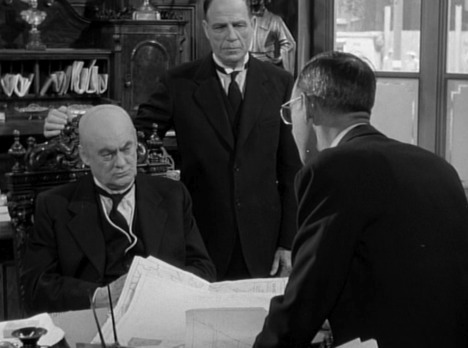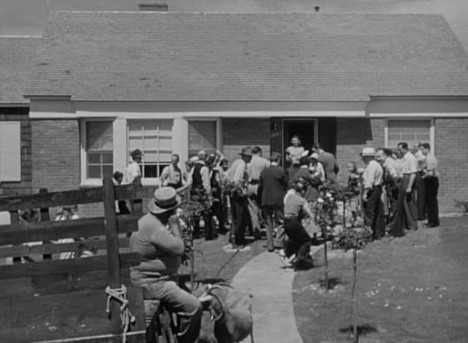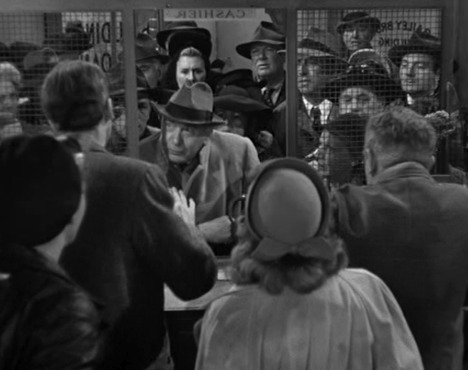

"lend them money and you get a rabble instead of a thrifty working class"
Usually when governments nationalize an industry they have a plan. Now that Hugo George Chavez Bush has nationalized the guarantor of all the mortgages and the reinsurer of all the insurers, what is he going to do with it?
For one thing, it is going to be a lot harder to get a mortgage. It will be like the old days, when you couldn't get a mortgage without a 25% down payment, guarantees from Dad, and a decent job where you didn't have to spend more than 30% of your income on your payments and property taxes. It helps if you are white and the bank manager's son is a school chum.
For another thing, unless there are some policy guidelines set, it is going to be a lot harder to build green. Way back in 1992 Daniel Akst wrote in Metropolis about the problems of building something different from the norm: " Almost everyone borrows to buy or build a home, and the size of the mortgage you can pry out of a lender depends heavily on the appraised value of the place, which is the bank's collateral, after all. I am here to attest that unusual houses, no matter how wonderful, appraise for less."
In the last decade, appraisals didn't matter that much; the banks were just selling the paper in CDOs to someone else. Now they will again; guess what will happen when you say you want to put in a $25,000 ground source heat pump instead of a $5,000 furnace, or insulate the walls to R-30 or build out of FSC timber. Only a small percentage of the population understand or care what this means, so you will never get their value out of an appraisal. Result: Innovation and green design requires cold, hard cash from rich purchasers. It's history for everyone else.

"bread, so you will never know hunger, salt so life will always have flavor, and a house"
But it doesn't have to be that way; The Government broke it and now it owns it. So what should the masters of a nationalized housing industry do? How can we promote green, efficient housing? Here are a few thoughts.
No more hurricane bait.
No more money to fund hurricane and tornado bait that the reinsurers have to pay for again and again. Build where it is safe and stable, don't build where it gets washed away. The pictures from Galveston are shocking, but when the city was washed away a hundred years ago, they rebuilt it on high ground at great expense, knowing this could happen again. Why were people allowed to build on an island that wasn't raised? Why were they able to get insurance? This hurricane was not a possibility, but a certainty. Now that the American government owns the reinsurer, are they going to pay out and let people build there again?
No more McMansions
OK, you own the lenders and the guarantors. So no more low density suburban sprawl. No more McMansions. If the government is funding development then it can tell every builder that there is no more money without assessing the cost of externalities, that we are not paying for highways and sewage treatment plants to service greenfield land when there are thousands of houses sitting empty across America.
Use your new powers to fix what we've got.
48% of our energy is consumed by buildings. Now that the government owns the business, they can fix that, and demand efficiency. Since they are the lender, they can lend for renovation and rehabilitation, not new construction. If they can drop half a trillion on the banks and investment houses and 25 billion on the car makers, they can drop a few bucks on insulation and caulk.
Ration Carbon for New Construction
Change the building codes so that every housing unit that is built gets to emit a given amount of carbon, no matter how big it is. Through the energy crises of the 70's to today, energy efficiency standards kept going up, but the amount of energy used in a house went up faster because they just keep getting larger. The average post-war 1950's house was 983 square feet; by 1970 it was 1500 SF; last year it was 2350. Change our building codes to permit a specific amount of energy consumption, period. If you want to build a house twice as big as, say, the design consumption of a 2500 footer, you have to double the insulation in the walls or cover the roof with photovoltaics. If you want a six burner professional stove in your kitchen, add some more insulation still.
Don't fund unless it is green.
You control the industry now; if people have to live in smaller houses on narrower lots or God forbid in multi-storey walkup solar powered housing, you have the power to decide. If nobody can get a loan or insurance unless their house is net-zero energy and on a streetcar line, well, you can do that. Everyone else can pay cash.

"But Tom, your money isn't here, it's in Joe's house and Mrs. Smith's house. That's what banks do!"
Now that the housing industry is owned by the state, the state can set the standards, it can decide who gets a loan and who gets insurance. Let's use this opportunity to ensure that we do it right, that we fix what we have instead of mindlessly building more. Demand a plan from your politicians before you vote for them.
More Reading on Alternatives to Traditional Housing and Mortgages
5 Alternatives to the Buy vs Rent Question
Do Hard-to-get Mortgages mean Better Cities? :